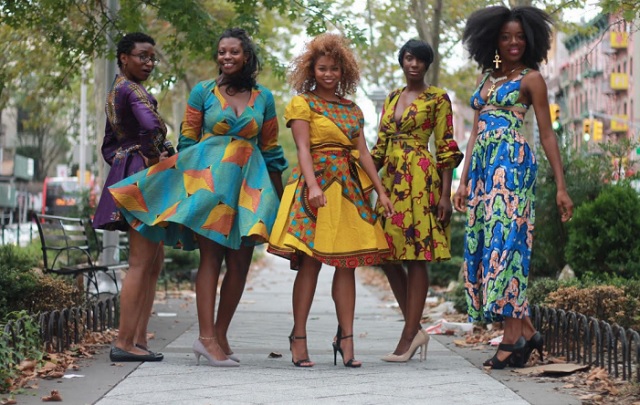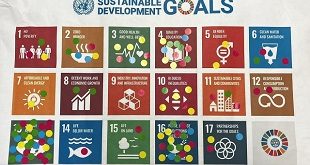
UNESCO report at Lagos Fashion Week highlights successes
Kampala, Uganda | RONALD MUSOKE | Africa’s fashion sector has “finally taken off” according to the latest report unveiled on Oct. 26 in Lagos, Nigeria, by Audrey Azoulay, the Director General of the United Nations Educational, Scientific and Cultural Organization (UNESCO).
The African continent has all it takes to become one of the next global fashion leaders, if decision makers offer greater support to all those who work in the sector and play a role in the fashion ecosystem.
That is the conclusion of the report by the United Nations Educational, Scientific and Cultural Organization (UNESCO) titled, “The Fashion Sector in Africa: Trends, Challenges and Opportunities for Growth” that was unveiled on Oct.26 at the Lagos Fashion Week.
“Fashion is really taking off in Africa, and this report shows that it can be developed even further,” said UNESCO Director General Audrey Azoulay at the unveiling, “The potential is enormous, not only for the economy, but also for young people’s inclusion, women’s empowerment and for African culture to resonate globally.”
She said, however, to achieve its full potential, designers, professionals and the entire production and distribution infrastructure need more support from public decision-makers.
She said the UNESCO report shows Africa can be a world fashion leader because it is a major producer of essential raw materials such as cotton which 37 out of 54 countries on the continent produce with a value of US$15.5 billion per year. However, the continent also imports textiles, clothing, and footwear to the value of US$23.1 billion per year.
UNESCO says there is also a growing consumer trend on the continent for fashion Made-in-Africa, particularly among young people (the under-25s who account for 50% of the continent’s total population) and among the growing middle class – which already make up more than 35% of the population.
According to UNESCO, Africa is also experiencing very rapid growth in the digital sector, which is facilitating intra-African trade and the emergence of young talent.
With 32 Fashion Weeks being held each year, Africa is also brimming with talent in the fields of haute couture (high-end customised fashion design), crafts and clothing. According to the report, a 42% increase in demand for African haute couture is expected over the next 10 years.
“Across the continent, people are increasingly looking for products ‘Made in Africa’ which they see as a symbol of pride and a way to affirm their identity,” said Omoyemi Akerele, the Director of Lagos Fashion Week.
“But in order to meet this growing demand, the entire production chain needs to be strengthened,” she said, adding that the UNESCO report is useful because it maps out the path to achieve this, and it will increase the awareness of public decision-makers.
The report underlines the economic and social opportunities created by the sector, 90% of which is composed of small and medium-sized enterprises, whose profits directly benefit populations. It also sheds light on current and future challenges related to Africa’s digital transformation, which UNESCO is closely following. These new practices are driving innovation and supporting the expansion of an industry that alone could increase the continent’s prosperity by 25%.
The report also shows how the sector could be a powerful springboard for gender equality, at a time when only 17% of the 3.5 million cotton farmers in poor African countries are women. Indeed, the report notes, there is considerable room for progress in this field, given that Africa has the resources to become a key player in global sustainable and organic cotton production.
The report further notes that for the African fashion sector to remain a driver of innovation and creativity, it must also reflect the continent’s cultural diversity, including its rich textile traditions, some of which have been inscribed on UNESCO’s intangible cultural heritage lists.
Governments must tackle challenges
However, UNESCO has also highlighted a few challenges which governments and decision-makers must tackle if they want to realize the potential of Africa’s fashion sector. For instance, the legal protections for designers and professionals need to be strengthened, in terms of intellectual property rights, remuneration levels, working conditions and the ability to organise into professional unions and social rights.
“UNESCO is already helping 23 African countries to improve the status of artists through legislation and regulations,” notes a brief from the UN cultural agency. According to UNESCO, investment must also be made in small and medium-sized enterprises, which today account for 90% of businesses in the fashion sector in Africa.
“Covering the entire continent, they are the gatekeepers of the diversity of cultural practices and expression. Generators of local employment, they are also a powerful lever for giving young people who want to enter the sector a chance.”
The UNESCO report says the transmission of savoir-faire, and formal training need to be improved. Africa is rich in traditional skills and unique textile techniques, some of which are already protected by UNESCO. The report encourages countries to set up mentoring schemes to ensure that these practices are passed on from generation to generation and can continue to inspire young designers.
At the same time, UNESCO is calling for an increase in the number of qualifications available in key related professions – quality control, commercial law, marketing, and in training in new technologies, such as 3D printing and e-commerce.
Fashion industry’s ugly side
UNESCO also insists that environmental standards need to be set. It says while the fashion industry remains one of the most polluting industries, Africa can make greater use of local materials, innovate around sustainable textiles, and raise awareness of sustainable consumption patterns.
According to the report, globally, fashion has now entered the unglamorous top 10 of the most contaminating industries in the world, together with energy and transport. Every link of the fashion value chain has a high carbon footprint and a negative impact on the environment, including in Africa.
In particular, the dominance of fast fashion has fueled unsustainable models of consumption based on the practice of “buy, use, dispose” which generates mass quantities of waste that is then exported to some countries in the Global South. In fact, the report notes, Africa is considered to be part of the global waste management system for clothing.
“The sector’s environmental impact – one of the biggest sources of pollution worldwide – must be taken into account. Only in this way will the African fashion industry contribute to the sustainable development goals set by the international community, including those of the Agenda 2063 of the African Union,” noted Azoulay in a foreword to the report.
Many of the challenges are shared across the fashion industry around the world, such as biodiversity loss, carbon emissions, and wastewater. But some s are specific to Africa, including the management of large amounts of imported second-hand clothes which harm the environment and Africa’s local textile and apparel sector.
In 2019, Africa accounted for nearly a third of global imports of second-hand clothes, estimated at US$5 billion, and about 80% of Africa’s population wears secondhand clothes, mainly imported from the United States, Europe, India, and Pakistan. East Africa in particular imports approximately 12.5% of the total global second-hand clothing market and this industry employs 355,000 people in the region.
Ghana, in West Africa, also shows a high reliance on second-hand clothing, with an estimated 15 million used garments entering the market in Accra every week. In Kinshasa (Democratic Republic of the Congo), it is estimated that 6% of rubbish is composed of textiles, both from second hand clothing and cuttings from bespoke tailoring.
The UNESCO report says while second-hand clothing markets create income, job opportunities, and livelihoods for many, it is estimated that 40% of all imported secondhand clothing imported into Africa is disposed of as waste in landfill sites, which causes issues with leakages into the environment and a general lack of waste management systems.
Experts say the volumes of second-hand clothing imported into African countries is unsustainable from a waste management perspective and it contributes to a distortion of the market and discourage investments in local production because it is low-quality but cheap. It limits growth and competitiveness of domestic producers.
The UNESCO report notes that the global market dynamics appear to have perpetuated the continuous dependence on foreign goods in Africa at the expense of self-sufficiency and that has hindered the development of a robust domestic fashion and textile ecosystem, with all the social and economic benefits that could come with it.
In 2016, East African countries including Burundi, Kenya, Rwanda, Tanzania, and Uganda planned to phase out the second-hand clothes trade by 2019 but this move was resisted from large exporter countries such as the United States which threatened to retaliate by suspending duty-free export privileges. Across East Africa, only Rwanda has implemented the plan by introducing high taxes on the imports of secondhand clothing to deter its trade.
Still, some progress was made recently thanks to African trade ministers, who adopted in June, this year, the so-called rules of origin in the textile and apparel industry that prevent trading in second-hand clothes across the continent under the preferences of the African Continental Free Trade Area (AfCFTA).
Under these rules, a country may accept the import of second-hand clothes but will not be able to export them to other African countries without facing duty charges. Mamkele Mene, the Secretary General of AfCFTA, said that the decision to curtail the trade of second-hand clothes is an important step to encourage value-addition and industrialization of the fashion value chain in Africa. This decision is a step in the right direction, but much remains to be done to guarantee its full implementation, the report notes.
 The Independent Uganda: You get the Truth we Pay the Price
The Independent Uganda: You get the Truth we Pay the Price



